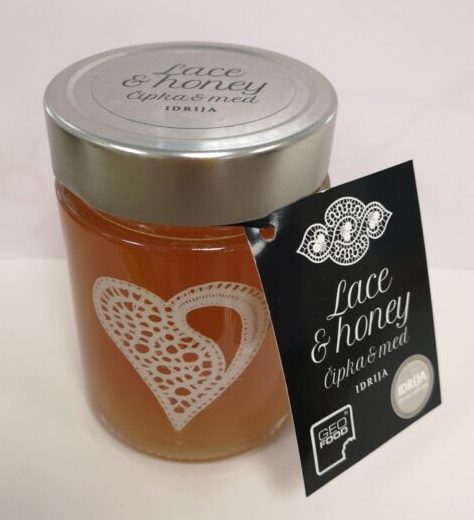Sugar lace based on Idrija lace pattern, coated with local honey. The pot unites the centuries-long tradition of Idrija: mining, beekeeping, and lacemaking, which have always been connected. The origin of Idrija lace most likely goes more than 300 years back. It is presumed that the knowledge of lacemaking was either brought from the German or the Czech provinces, from where many miner workers with their families came to work in the Idrija mine. Beekeeping was a relaxation for the miners after a long and hard working day, but also an important activity for farmers on a farm. Slovenian beekeepers were and still are breeding a special kind of autochthonous bee – Carniolan honey bee. There is no Carniolan honey bee without a beekeeper, no pollinating without a bee, no plants, no animal species and no man. In this glass, the long-standing tradition of Idrija is combined: a sugar lace according to the pattern of Idrija lace, covered with local Idrija honey.

Lace and honey
Where to find us

Honey for vita
The oldest written record mentioning bobbin lacemaking in the Idrija area dates back to 1696. Bobbin lacemaking is also under UNESCO Intangible Cultural Heritage of Humanity.Idrija town started developing after the discovery of mercury in 1490. The rich legacy of the mercury mine, which, due to its uniqueness, is listed on the UNESCO World Heritage List. Mining, […]
Read more »
Lace and honey
Sugar lace based on Idrija lace pattern, coated with local honey. The pot unites the centuries-long tradition of Idrija: mining, beekeeping, and lacemaking, which have always been connected. The origin of Idrija lace most likely goes more than 300 years back. It is presumed that the knowledge of lacemaking was either brought from the German […]
Read more »


